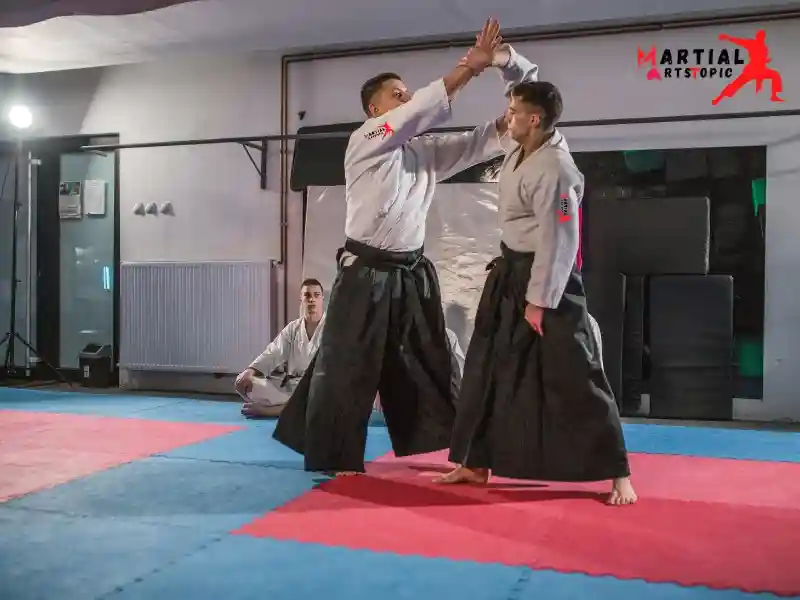
Is Aikido Considered a Martial Art?
Aikido is a Japanese martial art that focuses on self-defense and the redirection of an opponent’s energy. It emphasizes blending with an attacker’s movements and using their energy against them. Aikido is based on the principles of harmony and non-resistance, making it a unique and effective martial art for self-defense and personal growth.
Principles of Aikido
Several core principles, including blending with an opponent’s energy, guide aikido using circular movements to redirect attacks and maintaining a centered and balanced posture. Practitioners of Aikido also learn to remain calm and composed in the face of aggression, utilizing the opponent’s energy to neutralize the attack rather than meeting force with force.
Is Aikido Suitable for All Ages and Fitness Levels?
One of the unique aspects of Aikido is its accessibility to people of all ages and fitness levels. Aikido techniques rely on leverage and proper body mechanics rather than brute strength, making it suitable for individuals of varying physical abilities. Additionally, Aikido training can be adapted to accommodate different fitness levels, allowing practitioners to progress at their own pace.
Is Aikido Useless?
Despite misconceptions, they do not consider Aikido useless. While it may not focus on aggressive striking or ground fighting, Aikido’s emphasis on redirecting an opponent’s energy and promoting harmony can be highly effective in self-defense situations. Aikido’s principles and techniques can be valuable for individuals seeking non-violent conflict resolution and a holistic approach to martial arts.
Where does the idea that Aikido is useless come from?
Where does the idea that “aikido is useless” come from? Aikido is a martial art that has been practiced for centuries, yet it often gets a bad rap in certain circles. The notion that aikido is useless can be traced back to various factors, including historical context and misconceptions, the influence of media and pop culture, and a lack of understanding of aikido principles.
Historical Context and Misconceptions
The reason some people believe that aikido is useless stems from historical context and misconceptions surrounding the martial art. Aikido originated in Japan in the early 20th century, and its founder, Morihei Ueshiba, developed the art as a means of self-defense and as a way to promote peace and harmony. However, over time, misconceptions about aikido being too passive or impractical in real-life situations have persisted, leading to the belief that it is ineffective as a martial art.
Influence of Media and Pop Culture
The portrayal of aikido in media and pop culture has also contributed to the idea that it is useless. Movies, television shows, and other forms of entertainment often depict martial arts in a flashy and exaggerated manner, focusing on high-affected techniques and flashy moves. Aikido, with its emphasis on redirecting an opponent’s energy and using minimal force, may not always translate well to the big screen, leading to a misrepresentation of its effectiveness.
Lack of Understanding of Aikido Principles
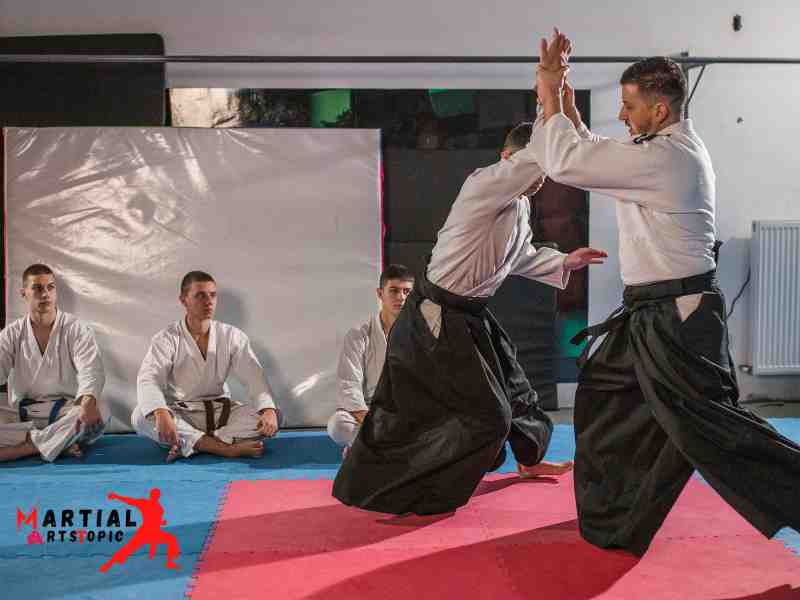
The belief that aikido is useless can also stem from a lack of understanding of its underlying principles. Aikido is based on the concept of blending with an opponent’s movements and redirecting their energy, rather than meeting force with force. Those who are more accustomed to aggressive and direct fighting styles may misunderstand this non-confrontational approach, leading to the perception that aikido is ineffective in practical self-defense situations.
The effectiveness of any martial art is highly dependent on the skill and training of the practitioner. Aikido, when practiced with dedication and understanding, can be a valuable and effective martial art for self-defense and personal growth. If you’re considering learning aikido, it’s important to approach it with an open mind and a willingness to understand its principles and applications.
Is Aikido useless as a physical exercise?
Is Aikido useless as a physical exercise? This question has sparked much debate in the fitness and martial arts communities. Some argue that Aikido lacks the physical intensity of other martial arts, while others praise its unique health and fitness benefits.
Health and fitness benefits of practicing Aikido
Aikido, a Japanese martial art developed by Morihei Ueshiba, focuses on using the opponent’s energy and movements to neutralize attacks rather than relying on brute force. As a physical exercise, Aikido offers a range of health and fitness benefits that are often overlooked. It provides a full-body workout that engages muscles, improves cardiovascular endurance, and enhances overall physical conditioning.
The practice of Aikido involves a series of fluid and dynamic movements that require strength, flexibility, and stamina. By performing techniques such as throws, joint locks, and pins, Aikido practitioners develop muscular strength and endurance. Moreover, the repetitive nature of training in Aikido helps improve stamina and cardiovascular fitness.
The role of flexibility, balance, and coordination
Flexibility, balance, and coordination are essential components of physical fitness, and Aikido places a strong emphasis on developing these attributes. Aikido techniques require practitioners to move with grace and precision, which can lead to improvements in flexibility, balance, and coordination over time.
The fluid and circular motions of Aikido techniques demand a high level of flexibility, as practitioners learn to move their bodies in ways that promote mobility and agility. Additionally, Aikido training cultivates a sense of balance and stability, as practitioners learn to maintain equilibrium while executing techniques and responding to their opponent’s movements. Furthermore, the intricate footwork and body positioning in Aikido contribute to the development of overall coordination and body awareness.
Testimonials from Aikido practitioners
To gain insight into the effectiveness of Aikido as a physical exercise, it is valuable to hear from individuals who have experienced its benefits firsthand. Many Aikido practitioners attest to the positive impact that the martial art has had on their health and fitness. They report improvements in strength, flexibility, endurance, and overall physical well-being because of consistent Aikido practice.
Aikido’s emphasis on harmony and non-aggression resonates with many practitioners, who appreciate the holistic approach to physical exercise and self-defense. The mental and emotional benefits of Aikido, such as increased focus, relaxation, and stress reduction, also contribute to its overall appeal as physical and mental training.
Is Aikido useless as a martial art?
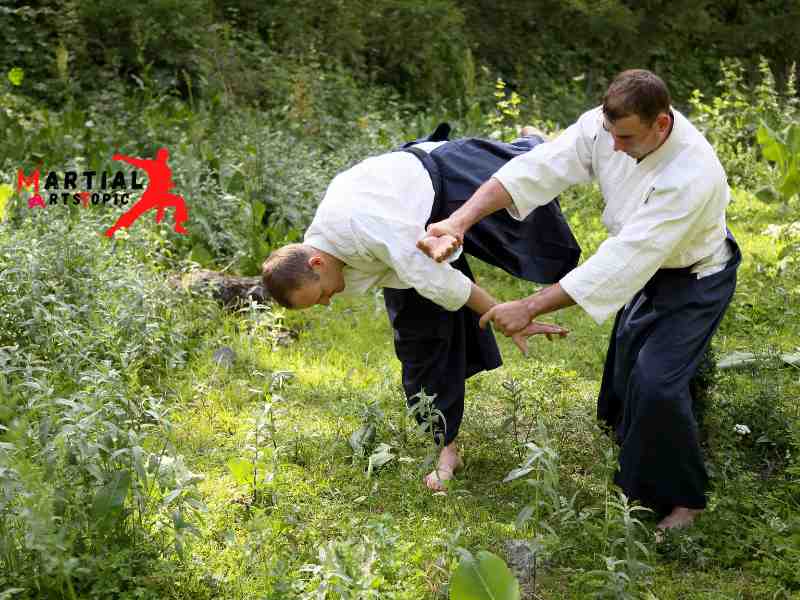
Is Aikido Useless as a Martial Art? Aikido is a Japanese martial art that focuses on blending with an opponent’s movements and redirecting their energy. It is often viewed as a peaceful and non-aggressive form of self-defense, emphasizing harmony and the resolution of conflict. However, there are those who question the practicality and effectiveness of Aikido in real-world self-defense scenarios. In this blog post, we will explore the core principles and philosophy of Aikido, its application in self-defense, and compare it with other martial arts to determine if Aikido is indeed useless as a martial art.
Core Principles and Philosophy of Aikido
The core principles of Aikido are rooted in the concept of non-resistance and non-violence. Practitioners are taught to blend with an attacker’s energy and redirect it in a way that neutralizes the threat without causing harm. Aikido techniques often involve joint locks, throws, and pins, all of which are designed to subdue an opponent without inflicting unnecessary pain or injury.
The philosophy of Aikido goes beyond mere physical techniques. It promotes the idea of harmony and the resolution of conflict through peaceful means. Practitioners are encouraged to cultivate a mindset of compassion, empathy, and understanding, aiming to diffuse confrontations rather than escalate them.
Application of Aikido Techniques in Self-Defense Scenarios
The criticism often leveled against Aikido is that its techniques may not be effective in real-world self-defense situations. Critics argue that the cooperative nature of Aikido training, where practitioners work together to execute techniques, may not adequately prepare them for the unpredictability and aggression of a genuine attack.
However, proponents of Aikido maintain that the principles and concepts taught in Aikido can be applied effectively in self-defense. By learning to blend with an opponent’s energy and use their momentum against them, Aikido practitioners believe they can neutralize threats without resorting to physical confrontation. Furthermore, the emphasis on developing a calm and focused mindset in Aikido training can be valuable in diffusing potentially violent situations.
Comparison with Other Martial Arts
When comparing Aikido with other martial arts, it’s important to recognize that each discipline has its own strengths and weaknesses. Aikido’s non-violent approach sets it apart from more aggressive martial arts such as Brazilian Jiu-Jitsu or Muay Thai. While Aikido may not emphasize striking or aggressive takedowns, its focus on redirection and control can still be valuable in certain self-defense scenarios.
Ultimately, whether Aikido is considered “useless” as a martial art depends on one’s perspective and goals. If the aim is to develop aggressive fighting skills for competitive combat sports, Aikido may not be the most suitable choice. However, for those seeking a martial art that promotes harmony, self-awareness, and non-violent conflict resolution, Aikido offers unique value.
Is Aikido useless for self-defense?

Is Aikido useless for self-defense? Debunking the myths and exploring the practicality of Aikido techniques. Aikido is a Japanese martial art that focuses on using an opponent’s energy and movements against them, rather than relying on brute force. However, there has been an ongoing debate about the effectiveness of Aikido techniques in real-life self-defense situations. I.
Effectiveness of Aikido techniques in real-life situations
Critics of Aikido often argue that its techniques are not practical for real-life self-defense scenarios. They claim that Aikido techniques rely on compliance from the attacker and are not effective against skilled or aggressive opponents. However, proponents of Aikido argue that the art emphasizes redirecting an attacker’s energy and using joint locks and throws to neutralize threats without causing serious harm.
While it is true that Aikido techniques may not be as aggressive as some other martial arts, they can still be effective in certain self-defense situations. Aikido practitioners are taught to remain calm and centered, allowing them to assess and respond to threats in a controlled manner. Additionally, the principles of Aikido can be applied to diffuse confrontations and protect oneself without escalating the violence.
The role of situational awareness and conflict resolution
Besides physical techniques, Aikido places a strong emphasis on developing situational awareness and conflict resolution skills. Practitioners are trained to read the intentions of potential attackers, de-escalate confrontations, and seek non-violent resolutions. This holistic approach to self-defense goes beyond physical techniques and equips individuals with the tools to avoid and defuse dangerous situations.
By cultivating heightened awareness and the ability to communicate effectively, Aikido practitioners can often avoid physical altercations altogether. This proactive approach to self-defense aligns with the philosophy of Aikido, which seeks to promote harmony and minimize harm in all interactions.
Personal experiences and anecdotes
To gain a deeper understanding of the practicality of Aikido for self-defense, it’s valuable to consider personal experiences and anecdotes from practitioners. Many aikidos students have shared stories of successfully using their training to protect themselves in real-life situations. These accounts often highlight the effectiveness of Aikido techniques in diffusing potentially violent encounters and subduing attackers without resorting to excessive force.
Additionally, personal anecdotes can provide insight into the mental and emotional aspects of self-defense, which are often overlooked in discussions about martial arts. Aikido’s emphasis on maintaining a calm and compassionate mindset can have a profound impact on one’s ability to navigate conflict and protect oneself without succumbing to fear or aggression.
Is Aikido Effective in Self-Defense Situations?
When considering the effectiveness of Aikido in self-defense, it’s important to understand the principles on which the martial art is based. Unlike other martial arts that focus on aggressive tactics and striking techniques, Aikido emphasizes blending with an opponent’s energy and redirecting their force. This non-violent approach is designed to neutralize aggression without causing harm to the attacker.
While Aikido techniques can be effective in self-defense situations, its practical application depends on the skill and experience of the practitioner. Aikido training emphasizes fluidity, timing, and precision, which can be powerful tools in real-life confrontations. However, it’s important to note that Aikido may not be the best choice for everyone seeking purely combative self-defense skills.
The Value of Aikido Beyond Self-Defense
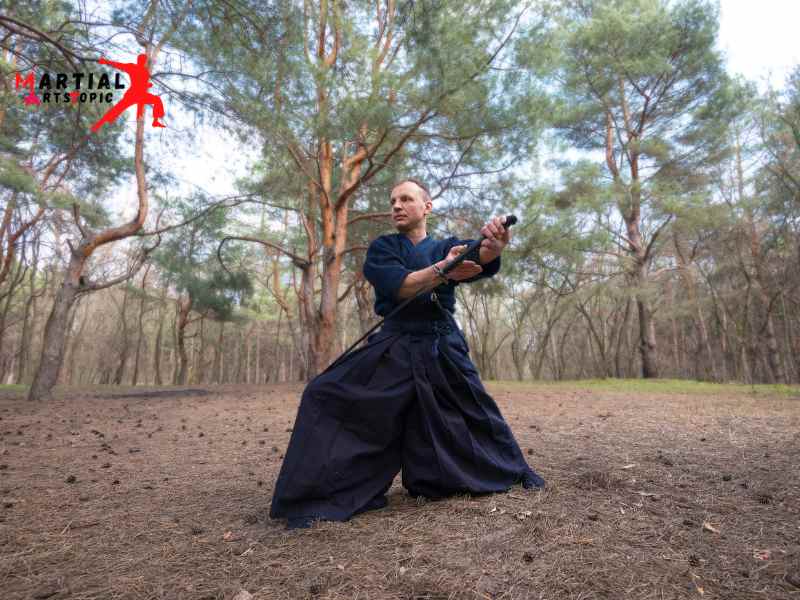
Despite the skepticism surrounding Aikido’s effectiveness in self-defense, its true value lies in the broader impact it has on practitioners. Aikido promotes physical fitness, mental clarity, and emotional balance. Through consistent training, practitioners develop a heightened sense of awareness, self-discipline, and self-confidence.
Aikido fosters a philosophy of harmonizing with the energy of the universe, emphasizing the interconnectedness of all living beings. This holistic approach extends beyond physical techniques, incorporating principles of mindfulness, compassion, and conflict resolution. Aikido practitioners learn to seek peaceful resolutions to conflicts, both on and off the mat.
Is Aikido Useless?
One of the common questions that arises when discussing Aikido is whether it is useless in real-life self-defense situations. Critics argue that the techniques taught in Aikido may not be practical against more aggressive and skilled opponents. However, it’s important to understand that Aikido is not solely focused on defeating an opponent through force. Instead, Aikido emphasizes the redirection of an attacker’s energy and the use of joint locks and throws to neutralize the threat without causing harm.
The Effectiveness of Aikido in Modern Self-Defense
In modern self-defense scenarios, Aikido can be highly effective when applied correctly. Its emphasis on blending with the energy of the attacker and using their force against them can be particularly useful in real-life situations. Aikido techniques are designed to subdue and neutralize an aggressor while minimizing the risk of injury to both the defender and the attacker. Additionally, Aikido training cultivates a heightened awareness of one’s surroundings and the ability to remain calm under pressure, which are essential skills in self-defense.
The Philosophy Behind Aikido: More Than Just Self-Defense
Beyond its physical techniques, Aikido is deeply rooted in a philosophy of harmony, compassion, and self-improvement. The founder of Aikido, Morihei Ueshiba, envisioned it as a way to achieve peace and reconciliation, both on and off the mat. The practice of Aikido encourages practitioners to develop a mindset of non-aggression and to seek peaceful resolutions to conflicts.
Aikido’s philosophy extends beyond the physical aspect of self-defense and promotes personal growth, mental resilience, and a sense of interconnectedness with others. It teaches practitioners to respond to conflict with grace and compassion, fostering a mindset that is valuable not only in self-defense situations but also in everyday life.
Benefits of Aikido Training
Aikido training offers numerous benefits, contrary to the misconception that it is useless. Aikido provides physical fitness, self-defense skills, mental discipline, and stress relief. Practicing Aikido can improve coordination, flexibility, and balance while also promoting a sense of calm and focus. Additionally, Aikido training emphasizes non-violent conflict resolution and self-awareness, making it a valuable practice for personal growth and self-improvement.
Physical and Mental Benefits of Aikido Training
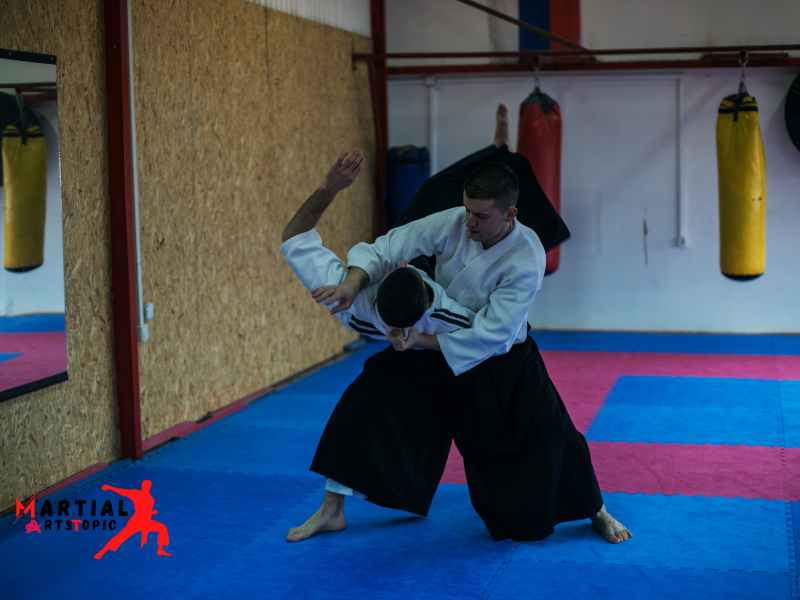
Aikido is a martial art that focuses on self-defense techniques without inflicting harm on the attacker. The practice of Aikido involves fluid, circular movements that can enhance physical strength, flexibility, and coordination. Through regular training, participants can improve their overall physical fitness and develop a heightened sense of body awareness.
Besides physical benefits, Aikido training also promotes mental well-being. The disciplined practice of Aikido can help practitioners achieve a state of mental calmness and focus. By learning how to respond to challenges with grace and composure, individuals can cultivate a sense of inner peace and resilience.
Philosophical and Spiritual Aspects of Aikido
Aikido is not just a physical discipline; it encompasses profound philosophical and spiritual principles. The philosophy of Aikido emphasizes harmony, non-resistance, and the redirection of energy. Practitioners are encouraged to cultivate a mindset of compassion, empathy, and understanding, both on and off the mat.
The spiritual aspect of Aikido lies in its emphasis on connecting with the energy of the universe and the interconnectedness of all beings. Through Aikido, individuals can explore their spiritual journey, seeking balance and harmony within themselves and the world around them.
Personal Development and Self-Improvement through Aikido Practice
Aikido provides a platform for personal development and self-improvement. The challenges and discipline of Aikido training can instill valuable life skills such as perseverance, patience, and self-discipline. Practitioners often experience personal growth as they learn to overcome obstacles and confront their limitations.
Aikido training fosters a sense of community and camaraderie among practitioners, creating a supportive environment for personal growth. The shared journey of self-improvement and mutual respect within the Aikido community can be deeply enriching and empowering.
FaQs:
What is Aikido?
Aikido is a martial art developed by Morihei Ueshiba in the early 20th century. It incorporates joint locks, throws, and pins, and is known for its fluid and circular movements. Aikido techniques are designed to neutralize an attacker’s aggression without causing serious injury, making it suitable for self-defense and non-violent conflict resolution.
What are the benefits of practicing Aikido?
Practicing Aikido offers a wide range of physical, mental, and spiritual benefits. It can improve flexibility, balance, coordination, and overall physical fitness. Additionally, Aikido training can enhance mental focus, discipline, and self-awareness. Many practitioners also find that Aikido helps reduce stress and promotes a sense of inner peace and harmony.
Is Aikido effective for self-defense?
Despite some misconceptions about its effectiveness, Aikido can be highly effective in self-defense situations. By using the attacker’s energy and momentum against them, Aikido practitioners can neutralize threats without resorting to aggressive or violent tactics. Aikido’s focus on non-resistance and redirection of force makes it a practical and ethical choice for self-defense.
How does Aikido compare to other martial arts?
Aikido is often compared to other martial arts such as judo, jiu-jitsu, and karate. While these arts may focus on different techniques and strategies, Aikido stands out for its emphasis on non-violent conflict resolution and its unique approach to self-defense. Unlike some martial arts that prioritize striking or grappling, Aikido techniques are designed to neutralize aggression while minimizing harm to the attacker.
Can Aikido be used in real-life situations?
Aikido techniques can be adapted to real-life situations, making it a practical choice for self-defense in everyday scenarios. By learning to remain calm and centered under pressure, Aikido practitioners develop the skills to effectively handle confrontations and diffuse potentially violent encounters.
What are some common misconceptions about Aikido?
One common misconception about Aikido is that it is ineffective for self-defense. However, this belief overlooks the practical applications of Aikido techniques in real-life situations. Another misconception is that Aikido is purely a defensive art, but in reality, it can be used to neutralize threats and protect oneself if necessary.
How can Aikido be applied to personal development and self-improvement?
Aikido is not just a martial art; it is also a path for personal development and self-improvement. The principles of harmony, balance, and non-resistance taught in Aikido can be applied to everyday life, helping practitioners cultivate a sense of inner peace, resilience, and empathy.
What are some key principles of Aikido?
Several key principles, including blending with an opponent’s energy guide aikido, maintaining a calm and centered presence, and redirecting force rather than opposing it directly. These principles form the foundation of Aikido practice and philosophy, emphasizing the importance of harmony and non-violence.
How can I find a reputable Aikido dojo or instructor?
When seeking to learn Aikido, it is important to find a reputable dojo or instructor who can provide quality training and guidance. Look for instructors with recognized certifications and experience in Aikido, and consider visiting different dojos to find a learning environment that suits your needs and goals.
Are there any success stories or testimonials from Aikido practitioners?
Many Aikido practitioners have shared success stories and testimonials about how Aikido has positively affected their lives. From improved physical fitness to enhanced self-confidence and conflict resolution skills, the benefits of Aikido are evident in the experiences of its practitioners.
Conclusion
While some may argue that Aikido is useless in certain contexts, it is important to recognize that every martial art has its own strengths and limitations. Aikido’s focus on harmonizing with an opponent’s energy and using redirection and joint locks can be effective in certain self-defense situations. Additionally, the mental aspects of Aikido can provide practitioners with valuable life skills. Ultimately, the usefulness of Aikido depends on the individual’s goals and the specific circumstances in which it is applied.
